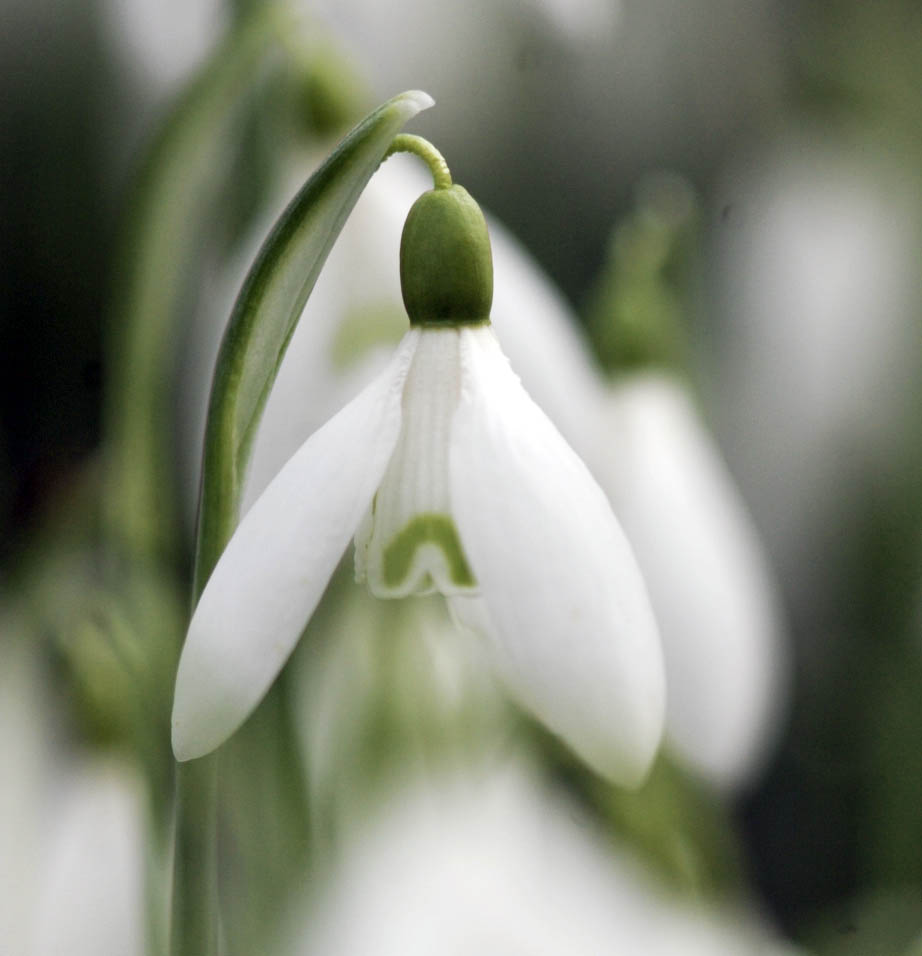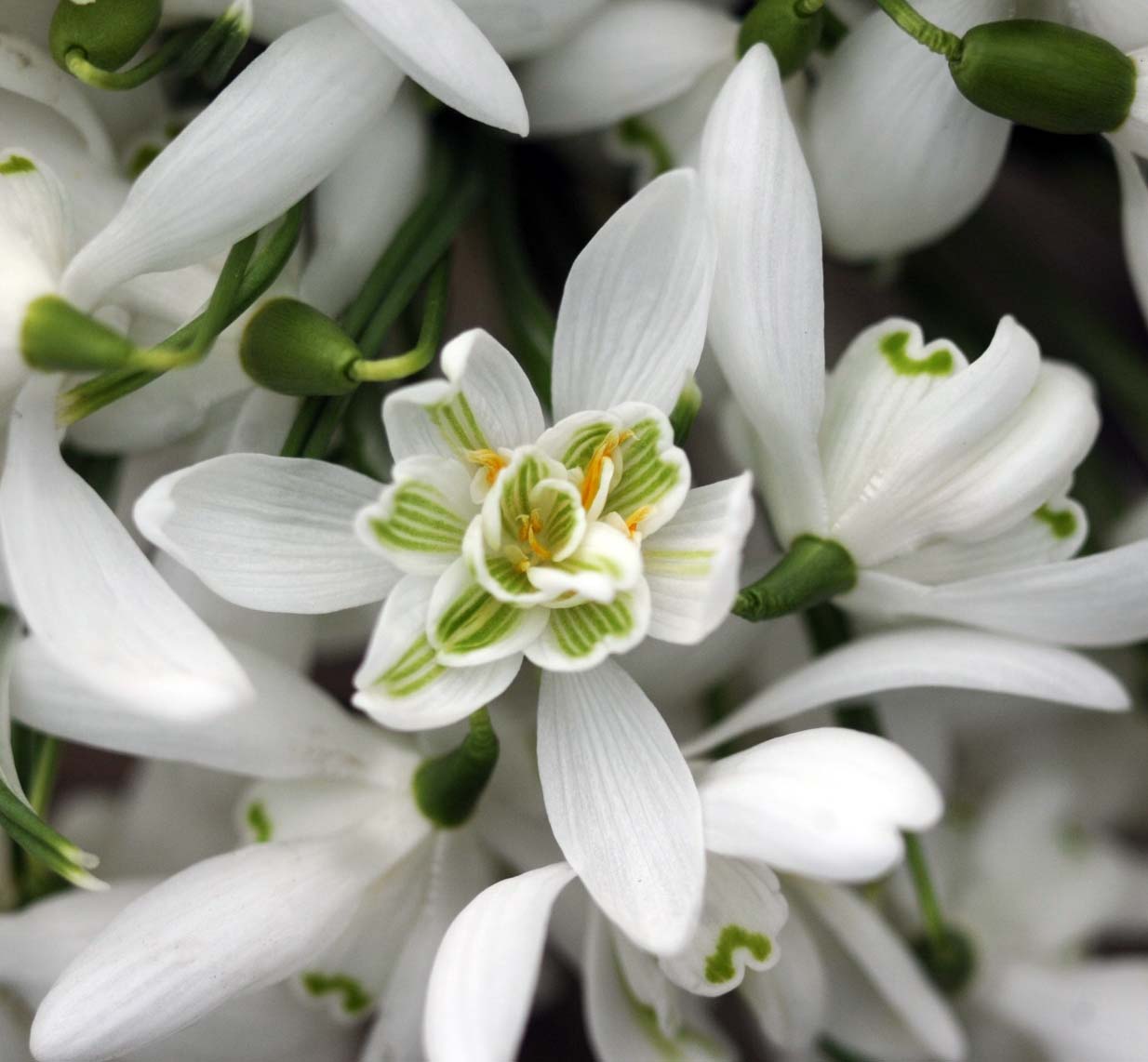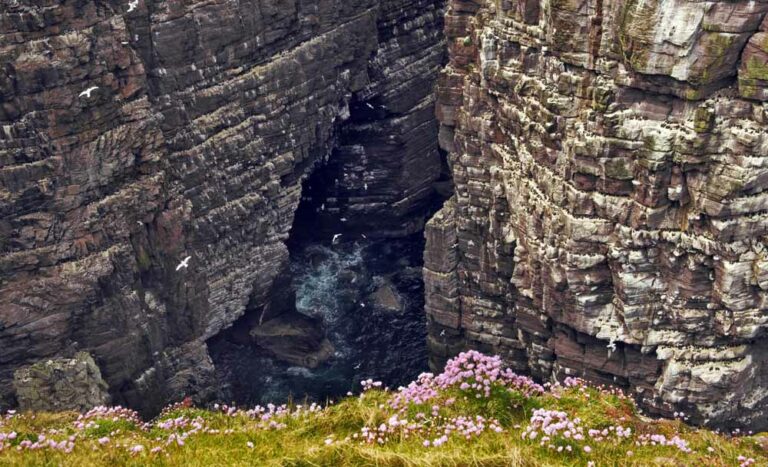Northumberland
February 16th 2023
A white city has popped up in the woods, out from the ashes of winter. I did see the green stubble of the snowdrops as they began to pepper the leaf mould, and I felt inside me the determination of those first stirrings piercing the woodland floor. Then there were those slivers of white on a sea of pencils, pushing themselves out of the cold ground. And before I knew it, they had hooked themselves to the arc of light, pulled up like wires between the trees, and littering the wood with a million bells, ringing in the wind and still rising higher. Or was it that the stars had decided to fall to earth?
I am not a galanthophile. I don’t collect named varieties or study the distinct markings of their infinite variations. But I can connect with the feeling of devotion that snowdrops inspire. I also understand how a passionate way of thinking about a single flower species can develop, given the world of possibility that snowdrops present to us, for as long as they last, cracking the winter open as they do, and without fail.
The love of a galanthophile is for the variety of shapes, colours and markings of different cultivars, for the excitement of adding a new plant to a collection, and acquiring a specialist botanical vocabulary dedicated to their species. Scape, poculiforum, sinus, plicate. And sometimes venturing into more poetic language to describe a named variety, such as one description I found in a catalogue, “heavily washed with green, as if to appear almost luminous”, and even indicating the presence of the grower, “the inner yellow segment sometimes more luminous in other years, perhaps due to temperature and light levels, or patience too.”
Patience must surely be an element, if it takes almost two decades to produce a new variety, with certainty, checking each day as seedlings flower for the first time, collecting and sowing seedpods and then waiting four to five years later for the first bulbil to bulk up to the possibility of flowering size. And then not knowing if it has in fact produced anything new.
I like the idea that patience is cultivated through such close association with a flower’s life, and to know that snowdrops also respond to light and temperature, as well as the loving scrutiny of human care. And that they are capable of cross-pollinating so easily, that unusual varieties can be found quite by chance, in random new discoveries, unaided, independently and deliciously of their own making.
I also rejoice that there can be so much dedication to cultivating beauty in the world, such skill and expertise honed in a keen eye for detail and subtle difference. Our understanding of the plant world depends on such knowledge. I was moved to read of a woman and her eight children in the 1930’s dedicating hours together in a single Scottish woodland, dividing and replanting snowdrops to encourage their proliferation for generations to follow. Ensuring abundance across distance. What a gift of time.
And although a single bulb can be a source of fierce financial competition, as in the most expensive snowdrop that ever sold going for £1850 on Ebay, the passion must surely be larger than a desire to possess something unique, and indicates a particular dedication of time and effort to ensure a source of enjoyment for years to come, something as precious as the details of any rare variety. And doesn’t everyone look forward to seeing snowdrops appearing again after the long winter months? I can appreciate the joy of seeing a named variety coming true again, like a friend coming towards you through the crowd with open arms.
I like too, to think of the dedication of the growers being met by the joy of the buyers. It must have something to do with happiness. I recently saw a photograph of a retired Tory politician, an elderly Lord, clasping a single snowdrop in a pot that had just been named after him. He looked radiant. And I swear he looked happier clutching his snowdrop than he ever did in all his years dealing with the affairs of the nation from the front benches. Imagine – a living legacy, named after him, renewing itself year by year in a hidden corner of a garden in England? A single bulb, released like a rare wonder into the world, his name attached to the subtle brushed markings of the interior world of a flower.

I myself nearly fell for a yellow variety with hidden saffron tips. I wavered, and thought better of it. I wasn’t sure that I would know how to look after it, or protect it from squirrels and slugs, if it were to have a productive life in the wood. But then, how to dedicate sufficient attention to a single bulb when out beyond the garden wall, there are swathes of already naturalised bulbs, spreading out like a delta between the old trees?
After consideration, it seemed more reasonable to appreciate the presence of what is already here, bringing me the first signs of spring in the absence of any other flowering, their silky, green stems and delicate pearls, such a mass of hope, peace and purpose, all those free-spirited temples of beauty and joy pushing through the frozen earth. So resilient, in spite of it all.
The river of the wood will flow on, as it always does, with the birds singing it on its way with celandines, violets, wood sorrel, stitchwort, bluebells and ferns all uncurling in the moving current. Already some patches of snowdrops that are more exposed to the growing hours of light are flaring open on warmer days and receiving the first foraging honey bees, while others lower down in the shade are still tightly closed, in the wings. But it won’t be long until they are all over.
And so I have decided to walk regularly amongst the spreading carpet behind the house and observe this incredible flowering phenomenon, while it is here to be enjoyed. After all, it is the first and most abundant flower of the year and marks our own journey into the light of spring. We all need to open from inside after the long hours of dark. Perhaps snowdrops give us the gift of noticing what is changing before the great explosion of life that follows, because their brightness is the first thing that draws our attention after the flattened reality of winter. The more we begin to look, the more we become attuned to what is present rather than absent, opening the doors of perception to texture, light and form and the whole unfurling world.
I want to take the time in my day to pause and enjoy them closely and in detail, to see fully and with a clear mind their wiry, glossy stems and snow white petals, their ruffled interiors splashed with gold and green. And I find myself out there, standing beneath the grey February skies, taking in the multitudes, the pools of brightening white they create beneath the empty trees in clouds of fragile beauty, yet quiet determination. And so that by the end of the day, I have given some moments of dedicated attention to their presence, to be instilled in the mind, fastened to memory and imagination, storing for all time their seeds of awakening and promise of renewal.




